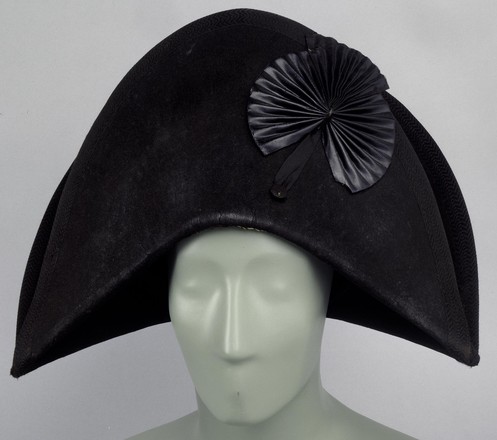The bicorn was worn widely as part of the full dress
of officers of most the world’s navies until the First World War.
The
bicorn, or bicorne, referred to the hat having two points.
Between
1796 and 1803 the English navigator and chartmaker Matthew Flinders surveyed
the Australian coastline in his ship Investigator.
He was the first known European to circumnavigate the continent.
Some forms of bicorn were designed to be folded flat,
so that they could be conveniently tucked under the arm when not being worn. A
bicorn of this style is also known as a chapeau-bras or chapeau-de-bras.
To be knocked
into a cocked hat is to be soundly and swiftly defeated.
The English called the shorter front brim of the bicorn
‘the cock’ and the longer rear brim was termed ‘the fan’. As a result, the
bicorn is often referred to as a ‘cocked hat’.
The
bicorn (hat) is an extremely rare garment from early colonial Australia and
Britain.



 Back to list
Back to list